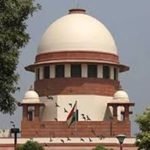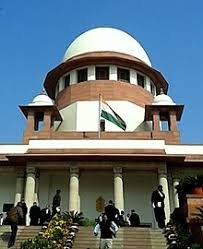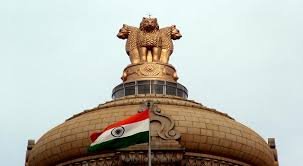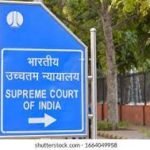The dispute concerns Dr. Mool Raj Kotwal (respondent), who retired from Sikkim State services as a Medical Advisor and Chief Consultant on 31 January 2005, upon attaining the age of 58 years…. After retirement, he was re-employed for a period of two years, from 1 February 2005 to 31 May 2005, which was later extended until 28 May 2019. Upon his initial retirement, he was paid cash equivalent to 300 days of unutilised leave as per Rule 36 of the Leave Rules 56. During his re-employment, he was again allowed cash equivalent to 300 days of earned leave standing to his credit.
The controversy arose when the State scrutinised this second leave encashment and determined it was “not in conformity to the Leave Rules”5. Consequently, the State Government issued an office memorandum on 27 February 2020 (the “clarificatory order”) stating that maximum 300 days of leave encashment specified in Rule 36 is inclusive of the period earned during extension of service or re-employment…. This led to the cancellation of an earlier order dated 31 May 2019 which had granted the second leave encashment benefit, and a directive to recover the sum….
Aggrieved, Dr. Kotwal filed a writ petition, which was allowed by the High Court’s Single Judge, relying on Rule 36 read with Rule 32 of the ‘Sikkim Government Services (Leave) Rules, 1982’ (Leave Rules). The Division Bench dismissed the State’s appeal, reaffirming the Single Judge’s decision…. The State of Sikkim then filed these appeals with the Supreme Court.
Law Involved
Sikkim Government Service Rules, 1974: Specifically Rule 98 (Retirement on Superannuation) and Rule 102 (Re-employment)…. Rule 98 dictates retirement at 58 years, and Rule 102 allows re-employment if it serves public interest and the employee is physically and mentally fit.
Sikkim Government Services (Leave) Rules, 1982:
Rule 6: Earning of leave.
Rule 17: Earned leave for Government servants serving in departments other than the vacation department….
Rule 18: Calculation of earned leave.
Rule 31: Leave during a period of extension of service.
Rule 32: Leave during a period of re-employment after retirement. This rule states that provisions of the Leave Rules apply as if the re-employed government servant entered government service for the first time on the date of re-employment….
Rule 36: Cash payment in lieu of unutilised earned leave and half pay leave on the date of retirement. This rule specifies a maximum of 300 days for leave encashment at retirement….
Article 14 of the Constitution of India: Impliedly invoked by the respondent, arguing discrimination and violation of natural justice.
Reasoning The core of the dispute revolved around the interpretation and inter-play of Rule 32 and Rule 36 of the Leave Rules, particularly whether re-employed government servants are eligible for a second leave encashment….
State’s Argument (Appellants): The State argued that Rule 36 allows a maximum of 300 days of leave encashment attaining the age of superannuation. They contended that the phrase “retires from service” in Rule 36 refers to the first retirement, and re-employed employees are not entitled to a second encashment. They claimed the High Court’s interpretation of Rule 36 with Rule 32 was incorrect. The “clarificatory order” of 27 February 2020 was issued to correct a “perpetual mistake”.
Respondent’s Argument (Employee): Dr. Kotwal argued that Rule 32 makes the Leave Rules applicable to re-employed government servants “as if he had entered government service for the first time” on re-employment…. Therefore, he contended, Rule 36 also applies to re-employed employees, allowing them to avail leave encashment again for unutilised leave accumulated during the re-employment period. He also asserted that cancelling the benefit without notice violated natural justice and was discriminatory.
High Court’s Reasoning (Upheld by SC): Both the Single Judge and the Division Bench concluded that Rule 36, when read with Rule 32, applies to re-employed government servants. They held that Rule 32 creates a “legal fiction” treating re-employed individuals as if they entered service for the first time, making them eligible for the benefits of Rule 36 again. The High Court found “no palpable infirmity or perversity” warranting interference.
Supreme Court’s Analysis: The Supreme Court affirmed the High Court’s reasoning. It noted that the “clarificatory order” of 27 February 2020, which sought to deny the benefit, was issued after the initial sanction of the second encashment on 31 May 2019 and subsequent cancellation without affording the respondent an opportunity to be heard, violating natural justice…. The Court emphasized that leave encashment is a “legal entitlement” within the framework of service law and employee welfare, grounded in principles of equity and economic security…. It explicitly stated that Rule 32 ensures that re-employed government servants are treated as if newly employed for leave purposes, and Rule 36, by its language, does not preclude a second benefit for leave accumulated during re-employment…. The Court found no reason to interpret Rule 32 and Rule 36 in a way that deprives re-employed employees of accrued benefits….
Holding The Supreme Court dismissed the appeals filed by the State of Sikkim. This means the Supreme Court upheld the High Court’s order dated 27 April 2023, which confirmed the Single Judge’s order dated 8 September 2022. Consequently, Dr. Mool Raj Kotwal is entitled to the grant of leave encashment for the second time for the period of his re-employment, beyond the initial maximum period of 300 days received at his first retirement. The orders passed by the High Court stand set-aside and the appeals stand allowed.
State of Sikkim and Others V. Dr. Mool Raj Kotwal
Supreme Court: 2025 INSC 559: (DoJ 23-04-2025)








